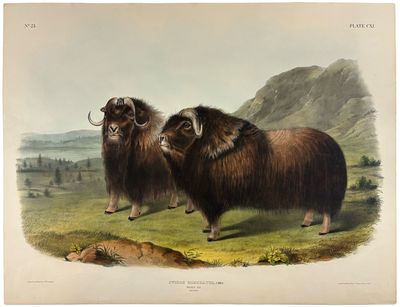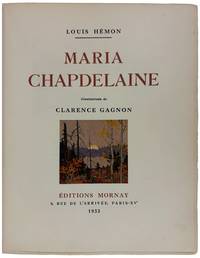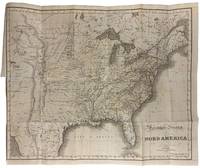1847 · New York
by AUDUBON, John Woodhouse
New York: J.J. Audubon, 1847. Lithograph, coloured by hand, by J. T. Bowen of Philadelphia. A fine double portrait of two male Musk Oxen, from the greatest illustrated natural history work to be produced in America during the nineteenth century.
The Musk Ox is to be found in Arctic America from the Mackenzie River and north of 60 degrees and east to Melville Bay. The Audubons had trouble finding a specimen of this beautiful animal because hunters in the Arctic could not be stopped from eating any individuals they found! "We know this peculiar animal only from the specimen in the British Museum, from which our figures are drawn, and which is the only one hitherto sent to Europe... The Musk Ox is remarkable among animals for never having had more than one specific name. Jeremie appears to have given the first notice of it. He brought some of the wool to France, and had stockings more beautiful than silk made of it. Captain Parry saw it on Melville Island in the month of May; it must therefore be regarded as an animal the native home of which is within the Arctic Circle, the dwelling place of the Esqimaux." (Quadrupeds, III, p.64) This very fine plate is from the folio edition of John James Audubon's The Viviparous Quadrupeds of North America, produced entirely in the United States. The work was to be John James Audubon's last, and by 1846 he had to hand over the drawing of the final 50 or so plates to his sons, John Wodehouse and Victor Audubon. The final parts of this work of national importance were published after his death in 1851, but the images remain as a final fitting memorial to the greatest American wildlife artist who ever lived. The production of the Quadrupeds was begun by John James Audubon and his sons at about the same as the commercially-successful octavo edition of The Birds of America. Unlike the double-elephant folio, the Quadrupeds was produced entirely in the United States. William Reese notes that "By 1843 the Audubon family business was a well-oiled machine, involving John James, his two sons,... and various in-laws and friends. The octavo Birds was still in production when J.T. Bowen began to produce the plates for the elephant folio edition of the Quadrupeds, the largest successful color plate book project of 19th-century America. It took the family five years to publish 150 plates in thirty parts. The massive project was a commercial success, thanks to the close management of Victor. There were about three hundred subscribers." (Stamped with a National Character pp.58-59)
Cf. Bennett, p. 5; cf. Reese Stamped With A National Character 36; cf. Sabin 2367; cf. Wood, p. 209. (Inventory #: 41931)
The Musk Ox is to be found in Arctic America from the Mackenzie River and north of 60 degrees and east to Melville Bay. The Audubons had trouble finding a specimen of this beautiful animal because hunters in the Arctic could not be stopped from eating any individuals they found! "We know this peculiar animal only from the specimen in the British Museum, from which our figures are drawn, and which is the only one hitherto sent to Europe... The Musk Ox is remarkable among animals for never having had more than one specific name. Jeremie appears to have given the first notice of it. He brought some of the wool to France, and had stockings more beautiful than silk made of it. Captain Parry saw it on Melville Island in the month of May; it must therefore be regarded as an animal the native home of which is within the Arctic Circle, the dwelling place of the Esqimaux." (Quadrupeds, III, p.64) This very fine plate is from the folio edition of John James Audubon's The Viviparous Quadrupeds of North America, produced entirely in the United States. The work was to be John James Audubon's last, and by 1846 he had to hand over the drawing of the final 50 or so plates to his sons, John Wodehouse and Victor Audubon. The final parts of this work of national importance were published after his death in 1851, but the images remain as a final fitting memorial to the greatest American wildlife artist who ever lived. The production of the Quadrupeds was begun by John James Audubon and his sons at about the same as the commercially-successful octavo edition of The Birds of America. Unlike the double-elephant folio, the Quadrupeds was produced entirely in the United States. William Reese notes that "By 1843 the Audubon family business was a well-oiled machine, involving John James, his two sons,... and various in-laws and friends. The octavo Birds was still in production when J.T. Bowen began to produce the plates for the elephant folio edition of the Quadrupeds, the largest successful color plate book project of 19th-century America. It took the family five years to publish 150 plates in thirty parts. The massive project was a commercial success, thanks to the close management of Victor. There were about three hundred subscribers." (Stamped with a National Character pp.58-59)
Cf. Bennett, p. 5; cf. Reese Stamped With A National Character 36; cf. Sabin 2367; cf. Wood, p. 209. (Inventory #: 41931)


